When working remotely, it’s important to update people. Since you’re not in an office and people cant’ see what you’re doing, you have to let people know that you are in fact, working on the assigned task.
While communication is important, where is the line between communicating what needs to be communicated and over-communicating? And how do you draw that line?
Not Everybody Needs to Know Every Little Thing
When working with a team, you don’t need to update the entire team and every little thing. Before you send an update, think about who is involved and who needs to know. Send it only to those people. If you’re having Task X done on Thursday instead of Wednesday doesn’t affect Bob in anyway shape or form, there’s no reason to email Bob, is there?
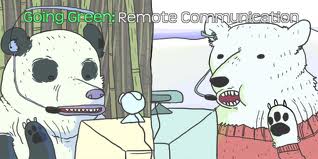
Send Regular Status Updates-When Needed
Status updates are good thing, until you start to over-do them. When you start on a project, discuss with your client, your boss, or your team how often they would like updates. This sets clear update expectations and helps to prevent over or under updating.
If you didn’t start off setting expectations, and how you’re updating is working, then by all means, keep doing what you’re doing. However, if you find that it’s not working-maybe one of you is constantly trying to get in contact with the other-it might be a good time to establish those parameters now. Better late than never.
Make Use of the Proper Communication Channels
As we mentioned before using the appropriate form of communication is important. If you have a question about a task assigned to you through a project management system, comment directly on the task in the system. Using the proper communication channels ensures that you get a timely response as efficiently as possible.
Know When to Pick Up the Phone
Ever end up in one of those email threads that could have been handeled through a 10 minute phone call, but instead turned into 30 emails? Recognize when emails are heading that way and pick up the phone, hop on Skype, or send an IM. Sometimes you just need real-time communication.
How do you update without over-updating?
Read More...
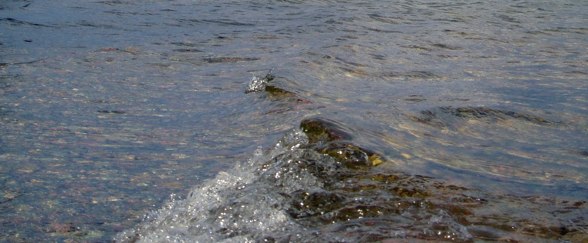
Not too long ago, before it (thankfully) fell out of fashion, bottled water was all the rage. It was common knowledge that the more you paid, the better it was. A few years ago, you couldn’t go 5 minutes without catching a glimpse of someone with a brightly colored Nalgene bottle. These days, everyone has a BPA-free aluminum water bottle or four, perfect for filling at the tap, which is now trendy. Whatever the container, the thing that made all these accessories valuable was what went in them: Water.
To which I say, “not thirsty.”
I’m something of an anomaly, apparently: I don’t like water.
I mean, I love it when I’ve been exercising and my throat is dry and the water is cold. Times like that, it’s the only thing I want to drink. But keeping a bottle with me at all times? No. Grabbing a glass as I pass through the kitchen? Why, when there are tastier options a like soda or wine a at hand?
I may be weird, but I’m not unique. I stumbled into a conversation with a friend a year or so ago in which he was complaining about not liking water. It was exciting to find someone who shared my antipathy towards perhaps the most precious natural resource. Water’s just soa¦ boring, we agreed.
For whatever reason, I just don’t like the taste (and yes, I see the irony of that statement). Water is healthy, of course, but I figured calorie-free diet soda was OK. So I was dismayed to see this article about a study that suggests diet soda might not be OK after all.
The study found a link between diet soda and a larger waist size. And by “larger,” we’re talking 70 percent greater than people who didn’t drink diet soda. It’s even worse news for people who had two or more diet sodas a day: Their waists were 500 percent bigger.
The research also delved into health consequences of artificial sweeteners, but I’m a vain person and the waist-size data grabbed my attention more a maybe 500 percent more a than the health stuff. Yowza.
So I’m embarking on a quest to find alternatives to both water and diet soda. Most juice has a high amount of sugar; milk has lots of calories; and alcoholic beverages are clearly not suitable for on-the-job consumption (not my job, anyway). I was intrigued to read about the backstory of Hint, which was created by a woman who was addicted to Diet Coke but didn’t like water (perhaps we were separated at birth). It’s not available in my city yet, but I plan to track it down and test it out. I’m also planning to do some of my own flavored-water creations.
If you’ve got wet-your-whistle suggestions, fire away. I promise to give them a try, at least until someone says they’ll make my waist way bigger than my aqua-chugging friends.
Read More...
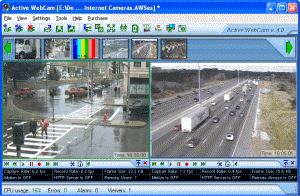 I had a Firefox browser open the other day when a coworker walked into my office. I jumped, simultaneously clicking a different browser tab to hide what I’d been viewing.
I had a Firefox browser open the other day when a coworker walked into my office. I jumped, simultaneously clicking a different browser tab to hide what I’d been viewing.
“What’s up?” my colleague asked.
“Not much,” I said, my guilty mouse finger searching for a work-related document to maximize on the screen.
She’d caught me in a distracted moment. It happens more often than I’d like to admit a one second I’m looking at something absolutely work-related, and then a few clicks later, I’m somewhere else entirely. My computer screen, unfortunately, faces the door to my office, so the scene described above isn’t exactly rare. I think my coworkers suspect.
My confession: I like to look at webcams. Especially when there’s lots of action: storms, sunrises, wildlife.
This confession either makes me boring as hell or a bona fide freak. But the truth is, if there’s a camera is monitoring scenery or traffic, I want to see it.
I think this, er, hobby, started after a visit to Glacier National Park a few summers ago. Glacier has an impressive array of webcams that can help you monitor the weather for your trip, or help you prolong your visit after you’ve returned home. The site quickly became a fixture of my daily routine. Leaves turned color; snow fell; water froze. It was beautiful.
I started branching out. Glacier leads the pack, but there are other national parks with cams, and I checked on those. My local coffee shop has a webcam so you can check the line. I used to live in upstate New York, and in the fall I wistfully searched out foliage cams. Any car ride over a mountain pass was preceded by a check of the ODOT site.
Then I found the mother lode, the jackpot, the URL that was to a webcam aficionado like me what Kulminator is to a beer lover: The FAA aviation cameras of Alaska.
These are traffic cams, but not for street traffic. They’re meant to show pilots the conditions at Alaska’s numerous small airports. Because of that, they don’t record freeways or interchanges, but mountain passes and tundras. Each location has multiple cameras pointing different directions. And the best part: You can watch time-lapse sequences. So, for instance, you can see the sun rise over Anchorage, the moon set over Kasigluk and the tides change at Hawk Inlet. I continually hope to see wildlife wander into view, maybe caribou in Tuntutuliak or bear in Valdez.
If I sound like I know where these places are in relation to each other, or any other point north of British Columbia, I don’t. I’ve never been to Alaska. But through these small, low-resolution images, I get to see crimson alpenglow on snowy peaks and ships cross misty, moody bays.
Maybe someday I’ll take a trip to Alaska. I’d like to. But the idea brings on a small worry, a fear that I try not to think about too much. I don’t want to know what this misgiving says about me, or my habit. It’s probably something all webcam viewers wonder about, which, in my case, is a bit disturbing. But here it is: Could reality live up to the wondrous pictures on my computer screen I’ve consumed so intently? Or would it disappoint, turn out to be different from my expectations, and frankly, uncomfortable?
If I ever find out, I’ll be sure to visit at least one aviation webcam location. I’ll be the fuzzy figure running back and forth (to ensure I appear in the frame), with goggles over my face. I might someday be ready to visit Alaska, but out my secret shame to friends and coworkers? No way.
Now if you’ll excuse me, I have a tab to check.
Read More...
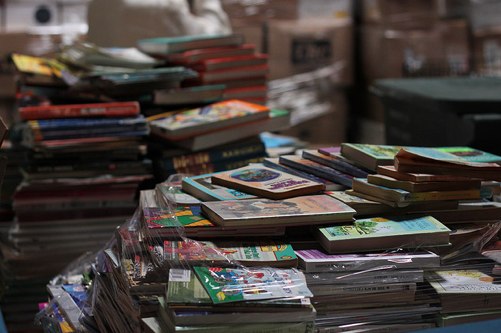 Banned Books Week is not taking place right now.
Banned Books Week is not taking place right now.
It happens in the fall, and librarians everywhere welcome it with a twisted glee. They can be quite the rebels, those librarians. If you don’t believe me, read how how librarians kept aStupid White Mena from becoming pulp (regardless of your feelings on Michael Moore, trust me, the story’s a good one). But back to Banned Books Week: Librarians celebrate it, making displays of all the books that have been banned or challenged. They relish in showing how some of the most popular books in history, even accepted masterpieces, have been deemed by some to be unfit for human consumption.
Not surprisingly, many of the books on the list were written for young audiences. Deciding at what age certain themes and language become appropriate is tricky enough on a case-by-case basis, never mind trying to apply standards to an entire generation.
I was lucky. As the offspring of one of those subversive librarians, I was not allowed to see R-rated movies until I was in high school—but I could read whatever I wanted. When I bothered to think about this parenting strategy, I realized it may have been lacking in logic. I could read Stephen King books at age 10, but not see the (typically underwhelming) movies based on those books until I was practically driving? Yeah.
But maybe there was some logic behind it. After all, I read voraciously then and still do today. Whenever I see “banned books” lists, I’m stunned by how many of my personal favorites are there. The very titles that infected my imagination and infiltrated my views of the world are repulsive to some. Perhaps it’s that the books that have the most ingenuity, the ones that can most radically change our perceptions, are just too frightening for some. For me, and scores of others (many of these books are award-winners), that’s what makes them magnificent.
Here, in no particular order, are some of my very favorite banned books, with brief commentary:
The Bridge to Terabithia
I remember wanting to inhabit this book. I remember crying at the end. Mostly, I remember reading it over and over again.
Lolita
It’s not a love story. It is, however, an amazing accomplishment of character and language.
The Giver
Just after college, I worked in a school as part of a volunteer committee. One day the other volunteers—all mothers of high schoolers—were discussing “The Giver,” a required book in one of the English classes. “I love that book!” I gushed. The mothers looked at me like I’d just said I loved burning small children with a branding iron. Turns out, they didn’t share my adoration. One mother claimed her high school daughter had had nightmares for months after reading it (I read it in fifth grade, but okay). Another pursed her lips and shook her head. A few years later, the same school drew national media attention when a parent (not one of the mothers I knew) refused to return a book to the school library, deeming it so offensive it should be burned.
Twilight
Yeah, yeah, I know. The writing isn’t great, and maybe they should be banned for overuse of the word “smoldering,” but Stephanie Meyer is a genius at plotting. To those who would ban it, I can only summon a South-Park like “come on.” The kids are actually entirely well-behaved: They don’t drink, swear, do drugs or have sex before marriage. So they do lie—but only to save the lives of their loved ones and battle evil forces. People have a problem with that?
A Wrinkle in Time
The first time I tried to read this book, I found it boring and put it down. I guess I was naturally (albeit subconsciously) deciding what was too mature for me. A year or two later, I picked it up again and I don’t think I closed it until I was finished. I went on to read every Madeline L’Engle book I could find.
Read More...
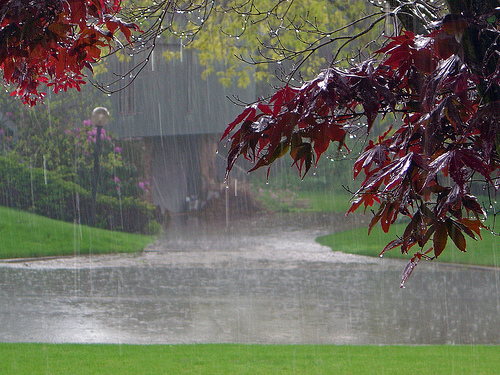 Here in the Pacific Northwest, this time of year can be a little depressing. More often than not, ita's raining, and the brief appearances by the sun serve mostly to remind us how little wea've seen it. Ita's exactly how people think of the Pacific Northwest: Gray, wet and cool.
Here in the Pacific Northwest, this time of year can be a little depressing. More often than not, ita's raining, and the brief appearances by the sun serve mostly to remind us how little wea've seen it. Ita's exactly how people think of the Pacific Northwest: Gray, wet and cool.
Fortunately, wea're creeping ever closer to summer, which is anything but gray, wet or cool. People from other parts of the country tend to be unaware of what a summer in Oregon or Washington is like. I could give you the climate data, but ita's much easier to simply say ita's glorious.
Rain? No. Sun? All day. Temps? Warm, but generally below anything starting with a 9. Excepting higher elevations, there arena't even many thunderstorms (a plus or minus, depending on your preference). Like the residents of the PNW, July, August and September are very accommodating.
But note that June does not make that list. June is not a favorite month in these parts. The month that sounds like a nice older woman is actually quite a cruel mistress, offering any number of warm, sunny days, but also dishing out punishment in the form of rain, wind or hail. Woe is the school child who thinks the end of the school year equates to summer weather, or the bride who thinks the official change of the season means her outdoor wedding will be mild and precipitation-free. June offers enough heat to convince us to put away our sweaters and flannel (ita's true, some of us do still wear it) in favor of tank tops and sandals, then it breaks our spirits with weather left over from the stunted month of February.
Hang around the west side of Oregon long enough, and youa'll learn the unofficial start date of summer: July 4. That, the old-timers say, is when you can count on the rain and clouds to be gone. After July 4, you can plan a barbecue, a river float or a picnic without fear of forgetting a raincoat. And I have to say that in the six years Ia've been living here, Ia've found this local adage to be true.
Read More...

 I had a Firefox browser open the other day when a coworker walked into my office. I jumped, simultaneously clicking a different browser tab to hide what I’d been viewing.
I had a Firefox browser open the other day when a coworker walked into my office. I jumped, simultaneously clicking a different browser tab to hide what I’d been viewing.
 Here in the Pacific Northwest, this time of year can be a little depressing. More often than not, ita's raining, and the brief appearances by the sun serve mostly to remind us how little wea've seen it. Ita's exactly how people think of the Pacific Northwest: Gray, wet and cool.
Here in the Pacific Northwest, this time of year can be a little depressing. More often than not, ita's raining, and the brief appearances by the sun serve mostly to remind us how little wea've seen it. Ita's exactly how people think of the Pacific Northwest: Gray, wet and cool.